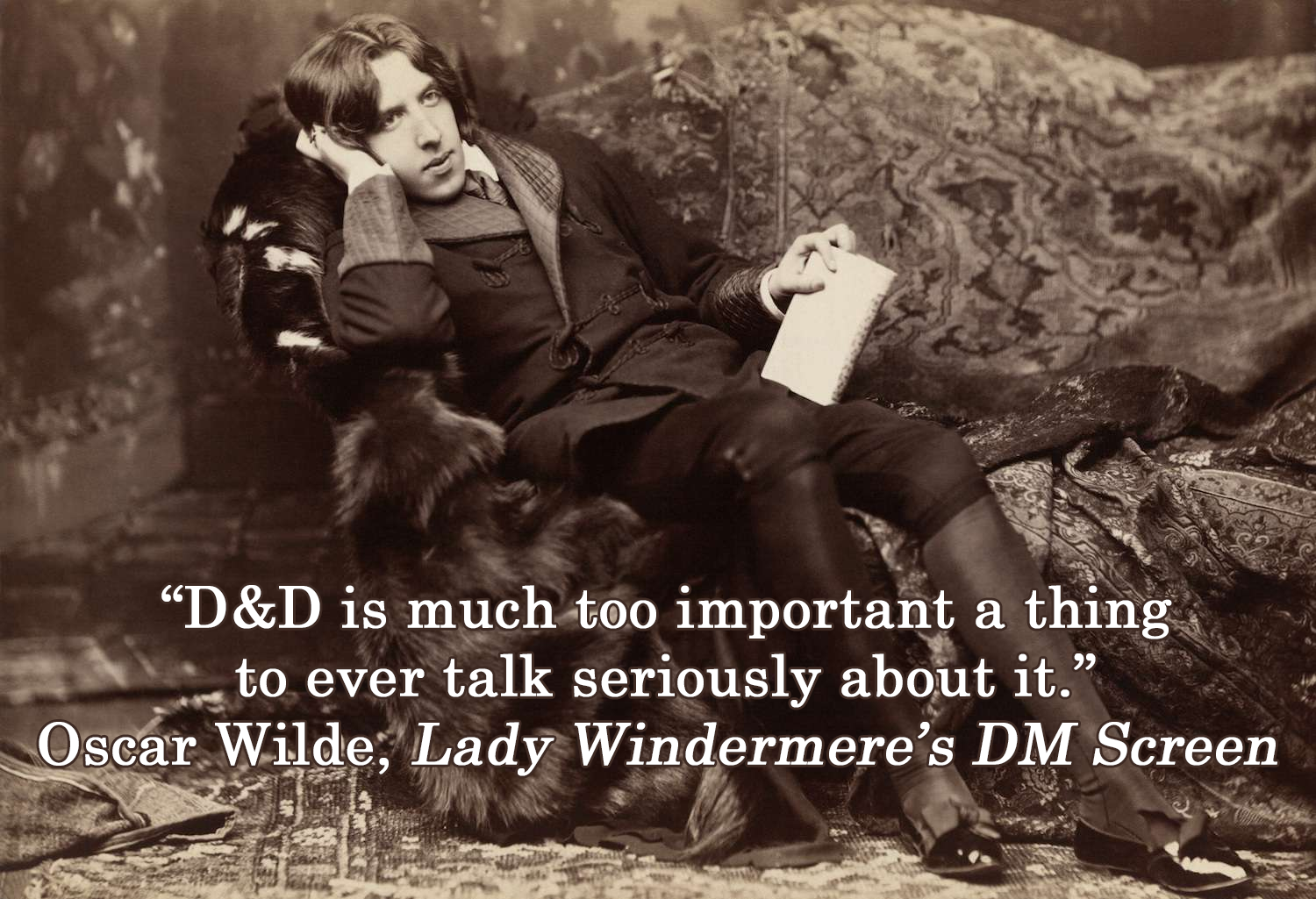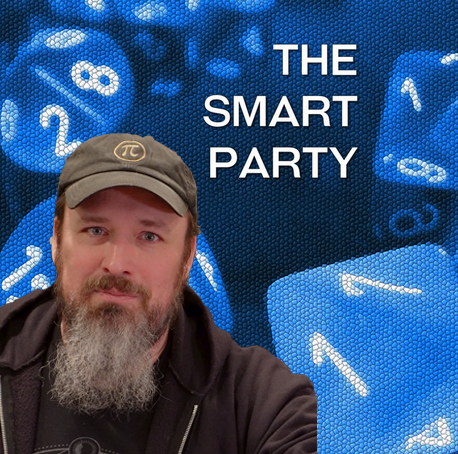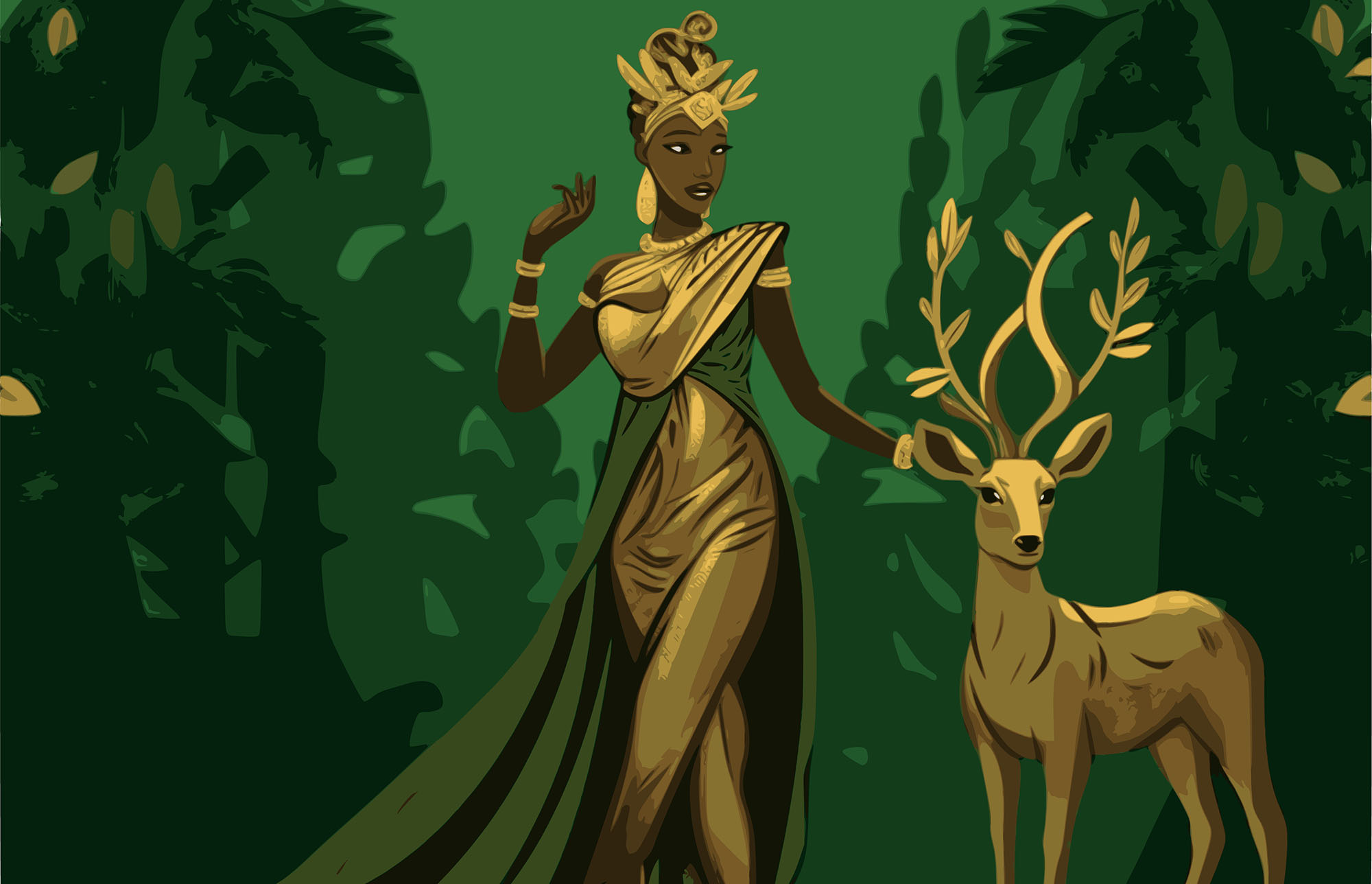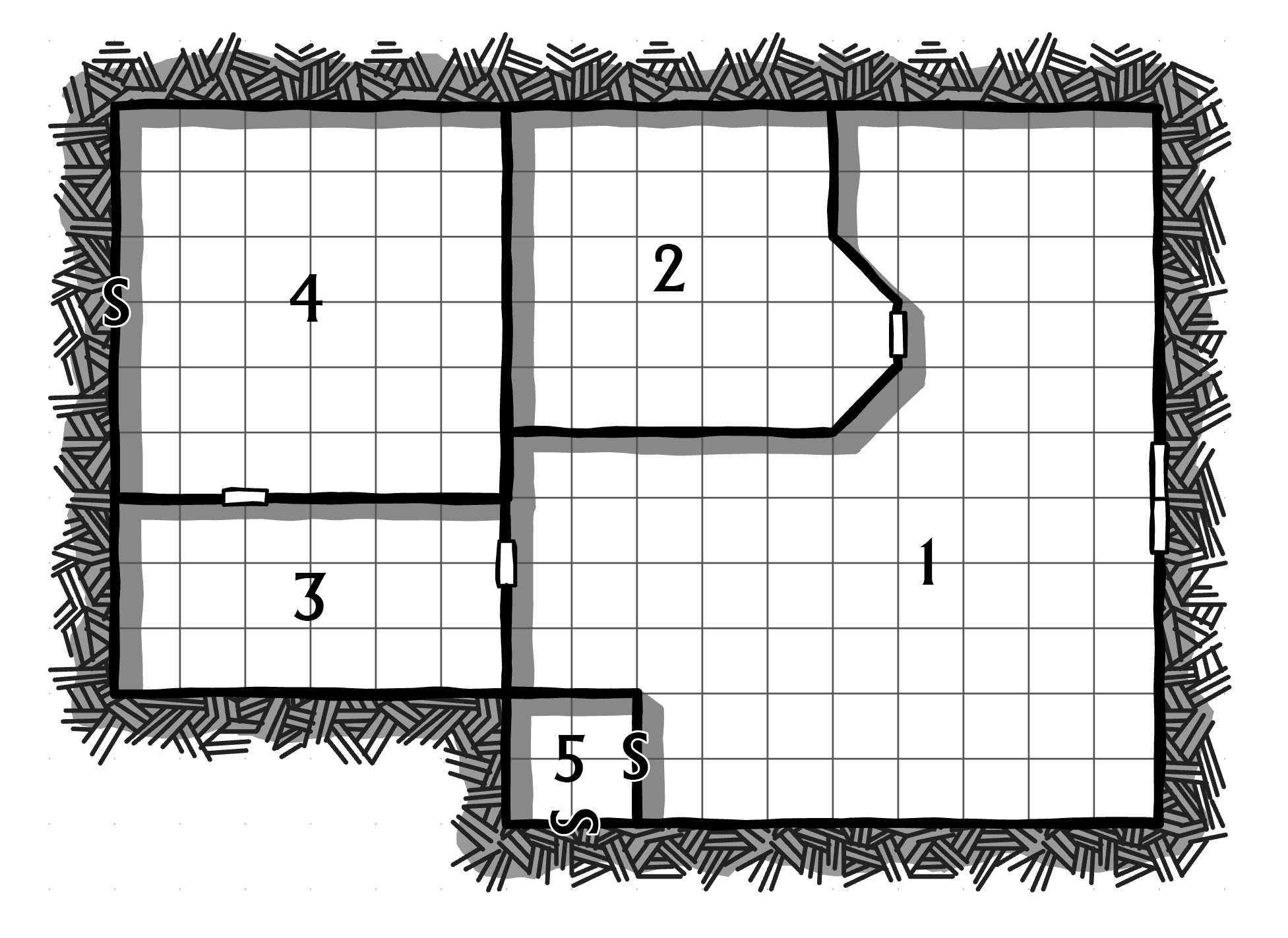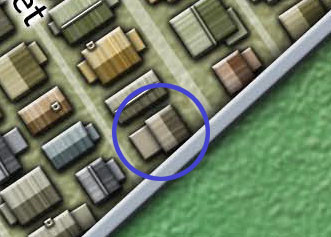
What if RPGs, instead of being invented by Dave Arneson in the early 1970’s, had existed throughout history?
We know that authors like Terry Pratchett, Glen Cook, David Lindsay-Abaire, and George R.R. Martin all played RPGs. What other authors might have done the same, if only they had had the opportunity?
For this social media parody project — collected here for the first time — I modified well-known literary quotes to reflect a tabletop perspective.
“Love not too well the rolls of thy hands & the devices of your character sheet.” – J.R.R. Tolkien, The Vecnallion
“Roleplay all you can; it’s a mistake not to. It doesn’t so much matter what you play in particular, so long as you have your roleplaying.” – Henry James, The Dungeon Masters
“Ever rolled. Ever failed. No matter. Try again. Fail again. Fail better.” – Samuel Beckett, Westmarch Ho
“If you don’t try at anything you can’t fail… it takes backbone to make the rolls you want.” – Richard Yates, Revolutionary Teleportation Circle
“When we roleplay, we always strive to become better than we are. When we strive to become better than we are, the whole table becomes better, too.” – Paulo Coelho, The Magic-User
“As a Game Master, you need to learn how to select when to roll just the same way you select your clothes every day. That is a power you can cultivate.” – Elizbaeth Gilbert; Eat, Pray, Roll
“Beware; for I am possessed of Fate Points. And therefore powerful.” – Mary Shelley, Frankenstein’s Game Master
“It does not do to dwell on balance and forget to play, remember that.” – J.K. Rowling, Elminster and the Philosopher’s Stone
“If you are interested in roleplaying, go at it at full speed. Lukewarm is no good. Hot is no good either. White hot and passionate is the only thing to be.” – Roald Dahl, My Uncle Arneson
“Nothing that’s worthwhile ever has a low Difficulty Class.” – Nicholas Sparks, Handout in a Bottle
“Above all, don’t fudge to yourself.” – Fyodor Dostoyevsky, The Game Masters Karamazov
“It is sometimes an appropriate response to a Sanity check to go insane.” – Philip K. Dick, Azeroth
“If I got rid of my PCs, I’d lose my NPCs.” – Tennessee Williams, Conversations with a Game Master
“The GM is a cunning weaver of fantasies and fables.” – Sappho
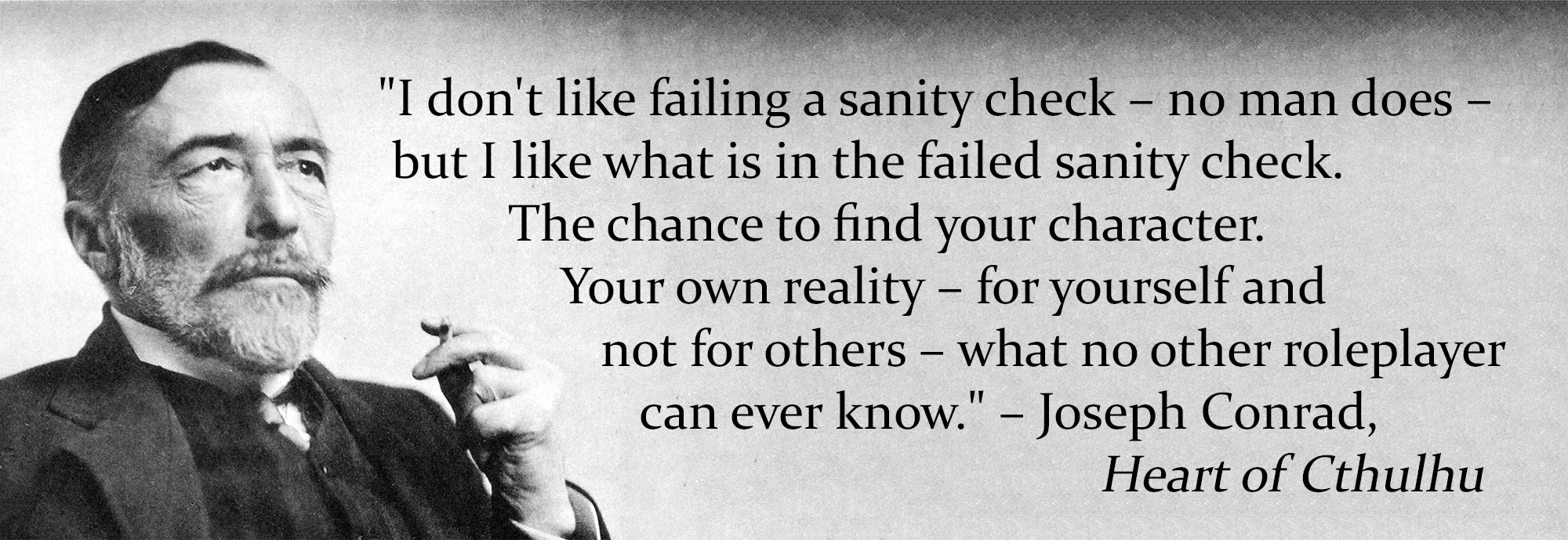
“It is a far, far better crit I roll, than I have ever rolled before; it is a far, far better long rest I go to than I have ever known before.” – Charles Dickens, A Tale of Two Modules
“I roleplay. Sometimes I think that’s the only right thing I do.” – Haruki Murakami, Spelljammer Sweetheart
“Yes: I am a roleplayer. For a roleplayer is one who can only find his way by moonlight, and his punishment is that he sees the dawn before the rest of the world.” – Oscar Wilde, The Critic as Game Master
“When you are GMing, you might as well imagine something worthwhile.” – Lucy Maud Montgomery, Anne of Icespire Peak
“I don’t want to die without any Twilight Scars.” – Chuck Palahniuk, Ars Magica Club
“If we wait until we’re fully prepped, we’ll be waiting for the rest of our lives.” – Lemony Snicket, The Ersatz GM
“Whenever you feel like critting anyone … just remember that all the characters of this world haven’t had the advantages you’ve had.” – F. Scott Fitzgerald, The Great Volothamp
“Made weak by Fort and Ref, but strong in Will. To strive, to seek, to find, and not to yield.” – “Arneson,” Alfred Lord Tennyson
“It is impossible to discourage the real Dungeon Masters. They don’t give a damn what you say, they’re going to run.” – Sinclair Lewis, The Innocents: A Story for NPCs
“You Game Mastered and I was longing for you. You cooled a heart that burned with desire.” – Sappho
“Whatever ability arrays our characters are made of, his and mine are the same.” – Emily Bronte, Wuthering Dungeon
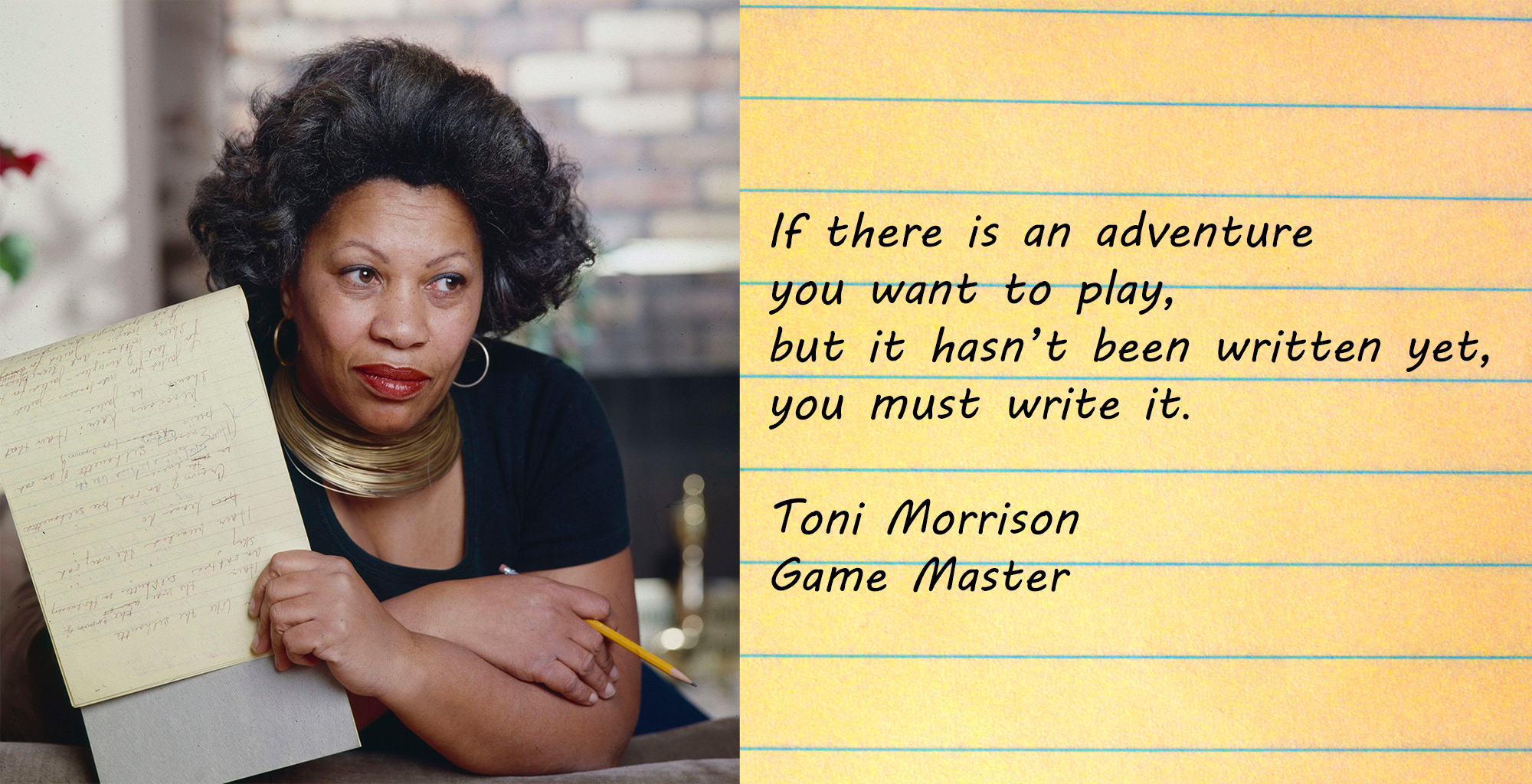
“You don’t know an NPC until you’ve fought them.” – Shi Nai’an, Outlaws of the Waterdeep
“Reality exists in the players’ minds and nowhere else.” – George Orwell, 1484 DR: The Year of the Awakened Sleepers
“It was the best of campaigns, it was the worst of campaigns.” – Charles Dickens, A Tale of Two Modules
“Nothing in the campaign is difficult. Only the Game Master makes it so.” – Wu Cheng’en, Journey to the Keep on the Borderlands
“The best GMs are those that tell you what you know already.” – George Orwell, 1484 DR: The Year of the Awakened Sleepers
“He knew everything about D&D except how to enjoy it.” – Joseph Heller, Roll-22
“Meeting an NPC of fame is better than just hearing his name.” – Shi Nai’an, Outlaws of the Waterdeep
“The party seeks XP entirely for its own sake. We are not interested in the good of others; we are interested solely in XP – pure XP.” – George Orwell, 1484 DR: The Year of the Awakened Sleepers
“Treasure is a handful of dirt from your home. Love not ten thousand taels of dungeon gold.” – Wu Cheng’en, Journey to the Keep on the Borderlands
“If you only run the adventures that everyone else is running, you can only think what everyone else is thinking.” – Haruki Murakami, Barovian Wood
“‘Are you ready?’ the Dungeon Master asked at last. ‘No,” the player answered. ‘Me neither,’ said another. ‘But if we wait until we’re ready we’ll be waiting for the rest of our lives. Let’s play!'” – Daniel Handler, The Ersatz Campaign
“All happy RPG groups are alike; each unhappy RPG group is unhappy in its own way.” – Leo Tolstoy, Tatyana Karenina
“Tomorrow I’ll think of some way to get him back. After all, tomorrow is another session.” – Margaret Mitchell, GM With the Wind
“It is a truth universally that a single GM in possession of a good campaign must be in want of a player.” – Jane Austen, Play and Prejudice
“We need never be ashamed of our critical failures.” – Charles Dickens, Roleplaying Expectations
“Nowadays people know the DPS of everything and the value of nothing.” – Oscar Wilde, The Min-Max of Dorian Gray
“How do we know that 2 and 2 make 4? Or that the force of gravity works? Or that the past is unchangeable? If both the past and external world exist only in the DM’s mind, and if the DM itself is controllable – what then?” – George Orwell, 1484 DR: Year of the Awakened Sleeper
“No GM, for any considerable period, can roll one dice for himself and another for the multitude, without finally getting bewildered as to which may be true.” – Nathaniel Hawthorne, The Scarlet Prep Notes
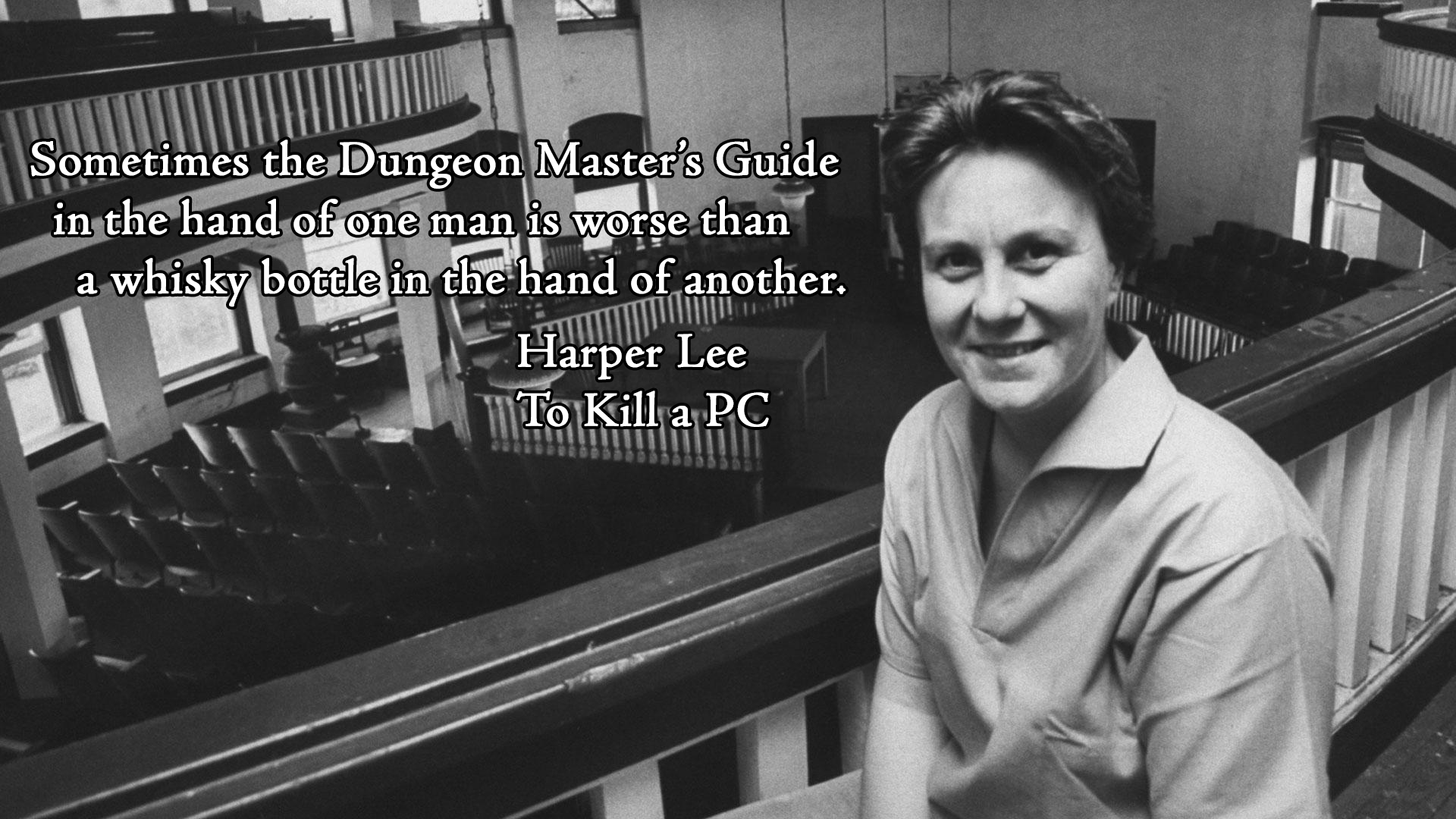
“D&D, Stephen said, is a nightmare from which I am trying to awake.” – James Joyce, Ulysses
“RPG sessions warm you up from the inside. But they also tear you apart.” – Haruki Murakami, Gygax on the Shore
“There is an idea of Elminster, some kind of abstraction, but there is no real me, only something illusory. Though you can shake my hand and feel flesh gripping yours and maybe even sense our spells are comparable: I simply am not there.” – Bret Easton Ellis, Waterdeep Psycho
“It’s much better to fudge in a way that no one knows anything about it.” – Leo Tolstoy, Tatyana Karenina
“We were the NPCs who were not in the sourcebooks. We lived in the blank white spaces at the edges of prep. It gave us more freedom. We lived in the gaps between the sessions.” – Margaret Atwood, The Barmaid’s Tale
“He who controls the dice controls the future.” – George Orwell, 1484 DR: The Year of the Awakened Sleepers
“The only roleplayers for me are the mad ones, the ones who are mad to play, mad to talk, mad to fight, desirous of everything at the same time, the ones who never yawn or say a commonplace thing, but burn, burn, burn like fabulous roman candles.” – Jack Kerouac, On the Battlemap
“Some players get the world, some players get a killer GM and a railroad to Arizona.” – James Ellroy, Waterdeep Confidential
“An RPG is to be lived, not controlled.” – Ralph Ellison, Invisible Game Master
“Maybe ever’body in the whole damn campaign is scared of each other.” – John Steinbeck, Of Goblins and Men
“Nothing succeeds like success.” – Alexandre Dumas, Six Years Fudging
“Come forth into the light of things, let dice be your teacher.” – William Wordsworth, The Random Tables Turned
And now, with all these fanciful quotes fresh in our minds, here is a final quote which is completely real and which I find inspirational in creating RPGs:
“Work on a good piece of writing has three steps: a musical stage where it is composed; an architectural one where it is built; and a textile one where it is woven.” – Walter Benjamin, One-Way Street
